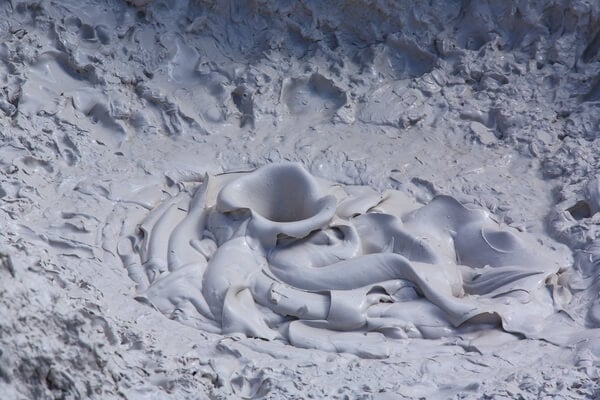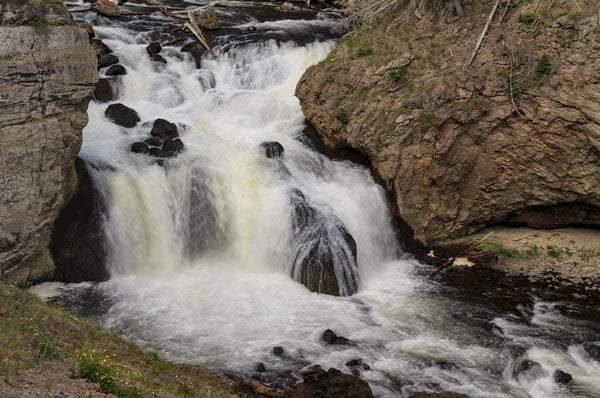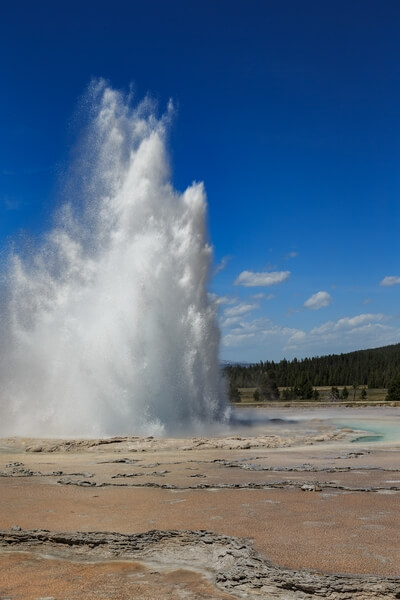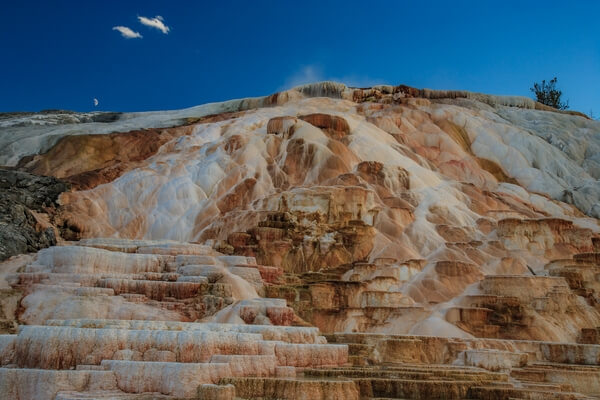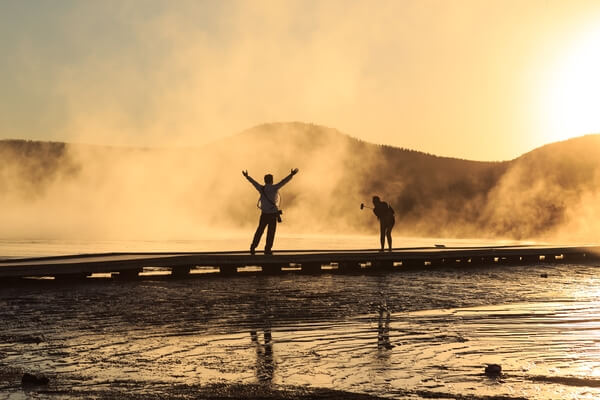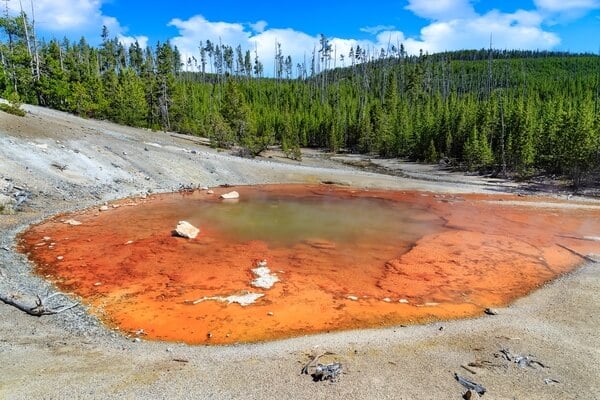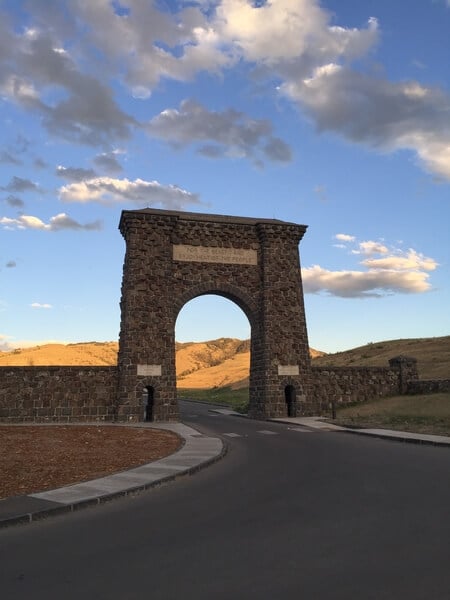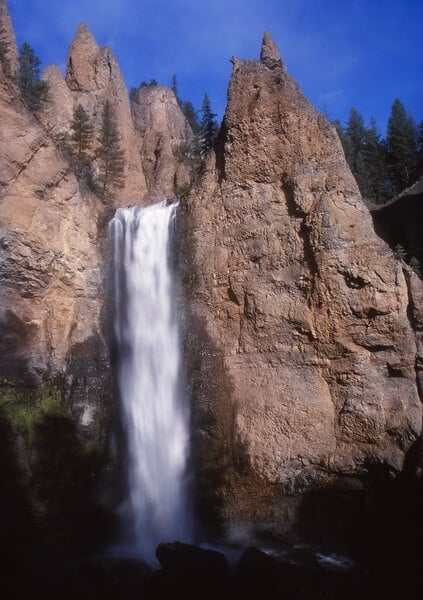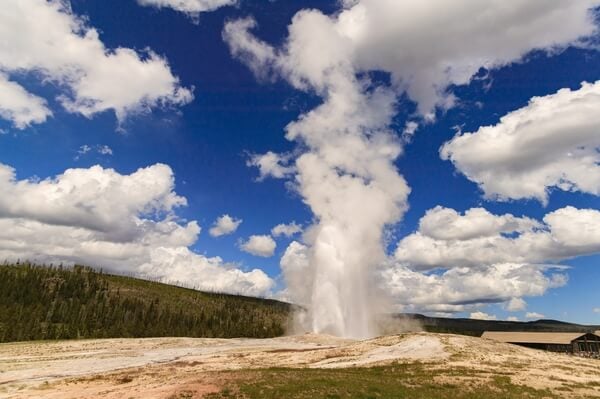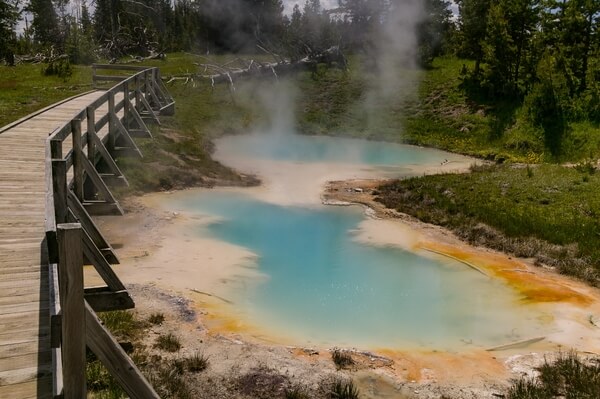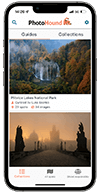Explore the top spots in
 Yellowstone National Park
Yellowstone National Park
139 photo spots 284 inspiring images 8 contributors
Top places to photograph in Yellowstone National Park in 2024
These are the very best Yellowstone National Park Instagram spots, curated by the PhotoHound team. If you've got limited time here, these are the must-see locations to shoot while you're in Yellowstone National Park!
Artist Paint Pots
The trail, a mixture of dirt and boardwalk, leads past numerous thermal features before reaching the feature it is named for, the Artist Paint Pots. The paint pots are located at the top of Paint Pot Hill. These paint pots are monochromatic whitish-grey mud. As you make the way up and down the trail you pass some more colorful features such as Blood Geyser and a group of “Milky Blue Pools.” This is one of the smaller thermal areas that are easily accessible in the park and offer some features that are a bit different from those you find at the larger areas. It is well worth the small amount of time it will take to visit this and walk this trail.
Learn more about Artist Paint Pots
Firehole Falls
Firehole Falls is a waterfall on the Firehole river located on the Firehole Canyon Drive in southwest Yellowstone.
Learn more about Firehole Falls
FLD - Great Fountain Geyser
Great Fountain Geyser is a large fountain geyser located on the Firehole Lake Drive. The Firehole Lake Drive is a 3-mile (4.8 km) one-way loop road, off the main Grand Loop Road, located between Old Faithful and Madison. There are many geyser and hot springs located along the route.
Great Fountain Geyser is a fountain geyser, which means when it erupts it puts out a huge plume of water and steam. The average height of this geyser’s eruptions are 100 feet (30.5 m) and can go as high as 200 feet (61 m). The geyser erupts, on average, every 10 – 14 hours, with eruption lasting close to an hour in duration. The cycle of the eruption is dependent on how long the previous eruption was, and the park service updates predictions based on that info, and can predict a time within 2 hours. You can tell an eruption is imminent when the pool overflows and boils violently.
Learn more about FLD - Great Fountain Geyser
Great Fountain Geyser is a fountain geyser, which means when it erupts it puts out a huge plume of water and steam. The average height of this geyser’s eruptions are 100 feet (30.5 m) and can go as high as 200 feet (61 m). The geyser erupts, on average, every 10 – 14 hours, with eruption lasting close to an hour in duration. The cycle of the eruption is dependent on how long the previous eruption was, and the park service updates predictions based on that info, and can predict a time within 2 hours. You can tell an eruption is imminent when the pool overflows and boils violently.
Mammoth Hot Springs (MHS) General
Mammoth Hot Springs is the name given to a large area in northern section of the park that includes many thermal features. It is best known for the large travertine terraces that rise on hill above Fort Yellowstone, established in 1891. The fort was built when the army was protecting Yellowstone National Park. The area encompasses the thermal terraces, the Mammoth Hotel and all of Fort Yellowstone. There is a lot to see in this area besides just the terraces including an interesting visitor center.
Learn more about Mammoth Hot Springs (MHS) General
MGB - Grand Prismatic Spring
Grand Prismatic Spring is the park’s largest hot spring measuring approximately 370 feet (112.8 m) in diameter and is over 121 feet (37 m) deep. It gets its name from the brilliant colors of the bacterial mats that surround it and the deep blue color of its deep pool. In the bacterial mats are archaebacteria also known as archaea, microorganisms that are similar to bacteria in size and simplicity of structure but radically different in molecular organization. These archaebacteria produce colors from green to red, with everything in between. This is why we get the reds, yellows, orange and greens found in Grand Prismatic Spring.
To really see all the colors of the spring you need to be a distance and have some height above. Currently the park service is working on a new trail that will offer this view, but for the next year or two that area will be inaccessible.
Learn more about MGB - Grand Prismatic Spring
To really see all the colors of the spring you need to be a distance and have some height above. Currently the park service is working on a new trail that will offer this view, but for the next year or two that area will be inaccessible.
NGB - Echinus Geyser
Echinus Geyser is the largest acid water geyser known. Acidic geysers are rare and most of them are found in Norris Geyser Basin. Echinus Geyser used to be more predictable, but in recent times its eruptions are irregular and can be anywhere from hours to months apart. The pool will gradually fill and then explode suddenly with bursts of steam and water that explode 40 to 60 feet (12 to 18 m) skyward. Eruptions can last from about 4 minutes to as long as 118 minutes.
Learn more about NGB - Echinus Geyser
Roosevelt Arch
Roosevelt Arch was completed in 1903 to serve as the grand entrance to Yellowstone National Park. At the time this was the only entrance into the park. Before the mass production and use of automobiles most people traveled to the park via train. The train station in Gardiner was completed directly across from the arch. From there people would board horse drawn carriage and ride into the park under the arch. President Teddy Roosevelt laid the cornerstone of the arch in a dedication ceremony where he spoke these words: “Nowhere else in any civilized country is there to be found such a tract of veritable wonderland made accessible to all visitors, where, at the same time, not only the scenery of the wilderness, but the wild creatures of the Park are scrupulously preserved as they were, the only change being that these same wild creatures have been so carefully protected as to show a literally astonishing tameness. The creation and preservation of such a great national playground in the interests of our people as a whole is a credit to the nation; but above all a credit to Montana, Wyoming and Idaho.”
Learn more about Roosevelt Arch
Tower Fall
Tower Fall is the second most popular fall in the park after Lower Yellowstone Fall. It has been described as one of the prettiest waterfalls in the world. The water plunges 132 ft (40.2 m) between two towers of volcanic rock.
Learn more about Tower Fall
UGB - Old Faithful
Old Faithful is the most iconic feature in Yellowstone National Park. The geyser erupts an average of 74 minutes apart but the intervals can be between 60-100 minutes. The building around Old Faithful, the visitor center and lodges have more accurate predictions based on the previous eruption. The geyser has an average height of 130 feet (40 m) and is always a crowd pleaser. Eruptions last between 1.5 - 5 minutes.
Learn more about UGB - Old Faithful
WTGB - Seismograph and Bluebell Pools
Seismograph and Bluebell Pools are two separate springs whose pools are conjoined. Seismograph is the larger deeper pool in the foreground and Bluebell is the smaller blue pool in the background.
Learn more about WTGB - Seismograph and Bluebell Pools
We hope you enjoy photographing these great Yellowstone National Park Instagram locations. We love seeing your images of the most Instagrammable places in Yellowstone National Park, so make sure to share your images on PhotoHound and tag us on Instagram @photohound and hashtag #photohound for a chance to be featured.
